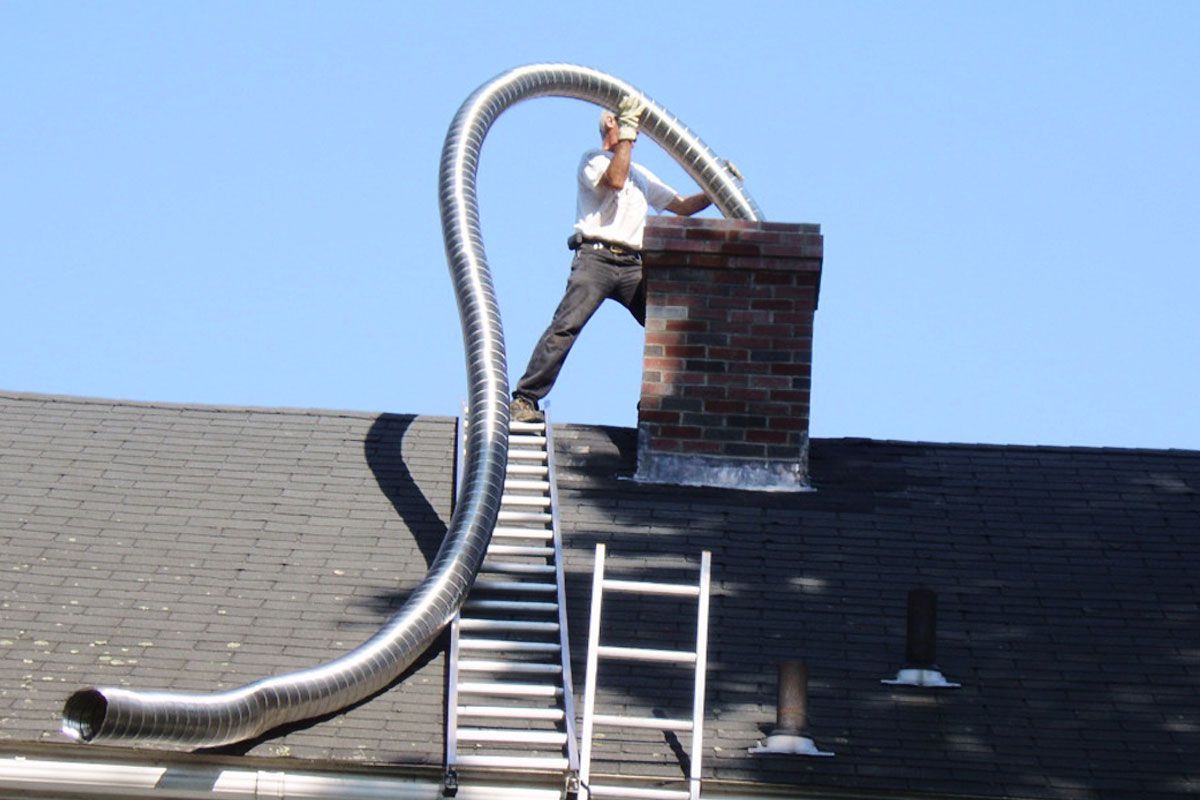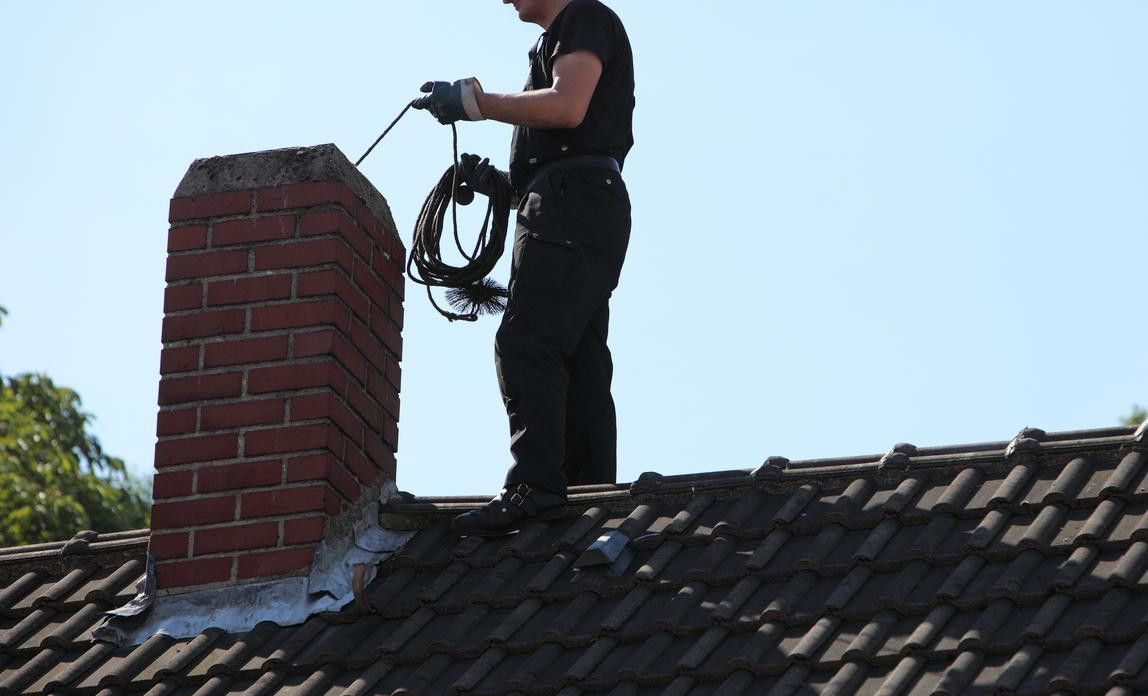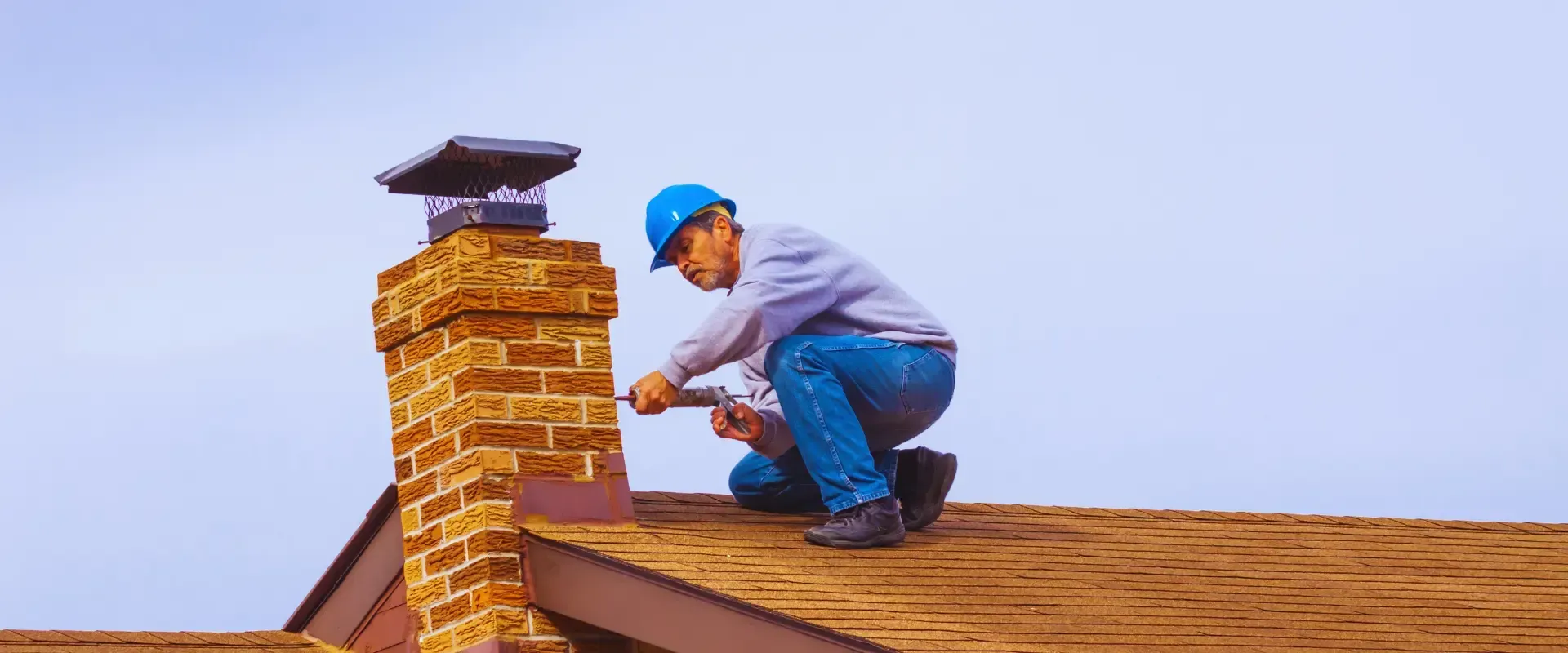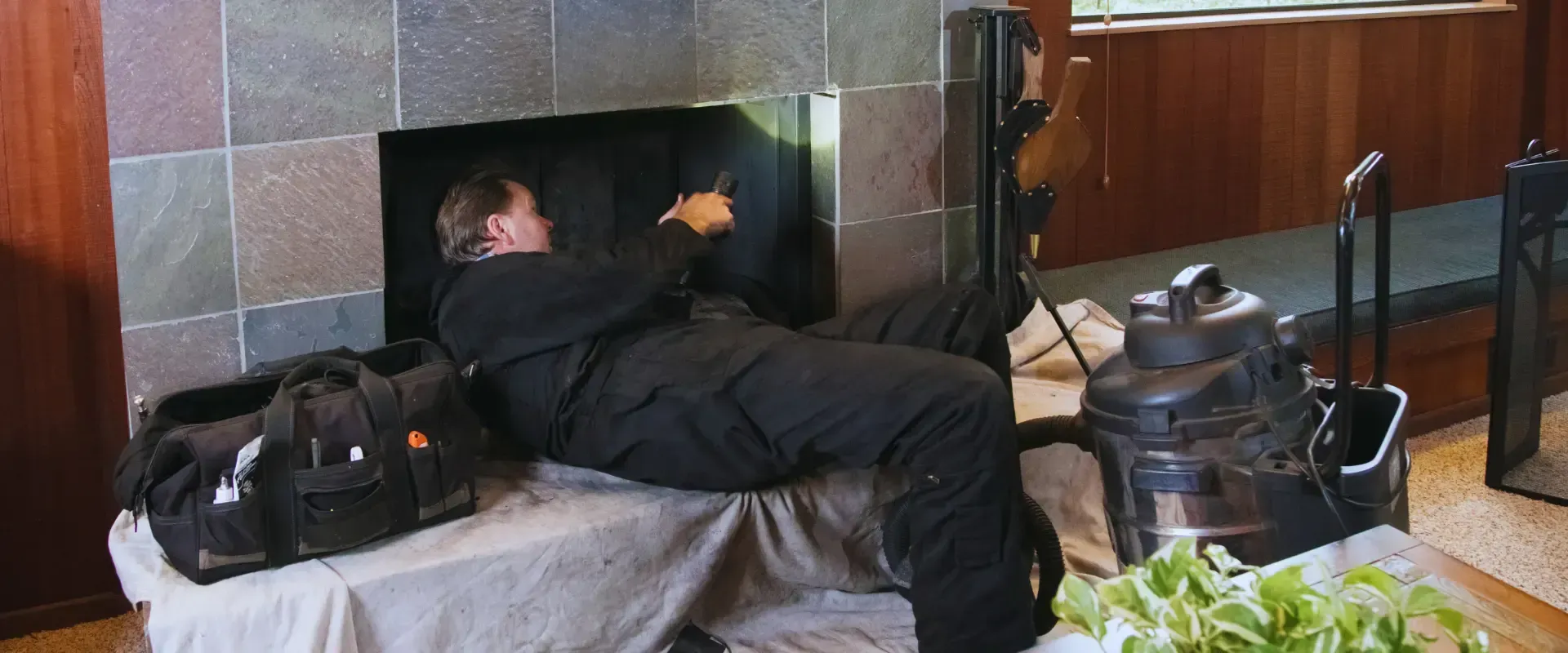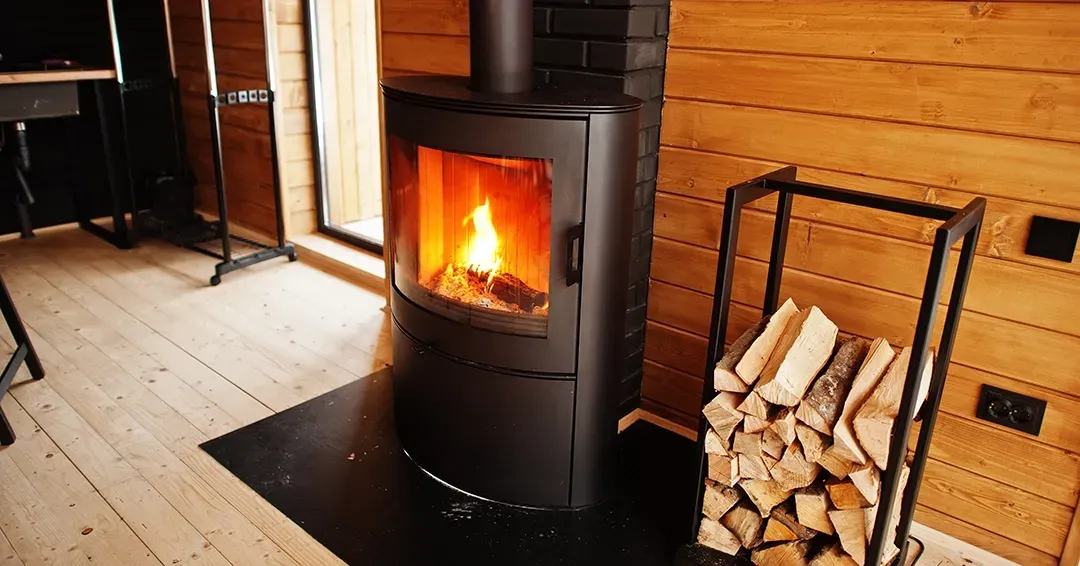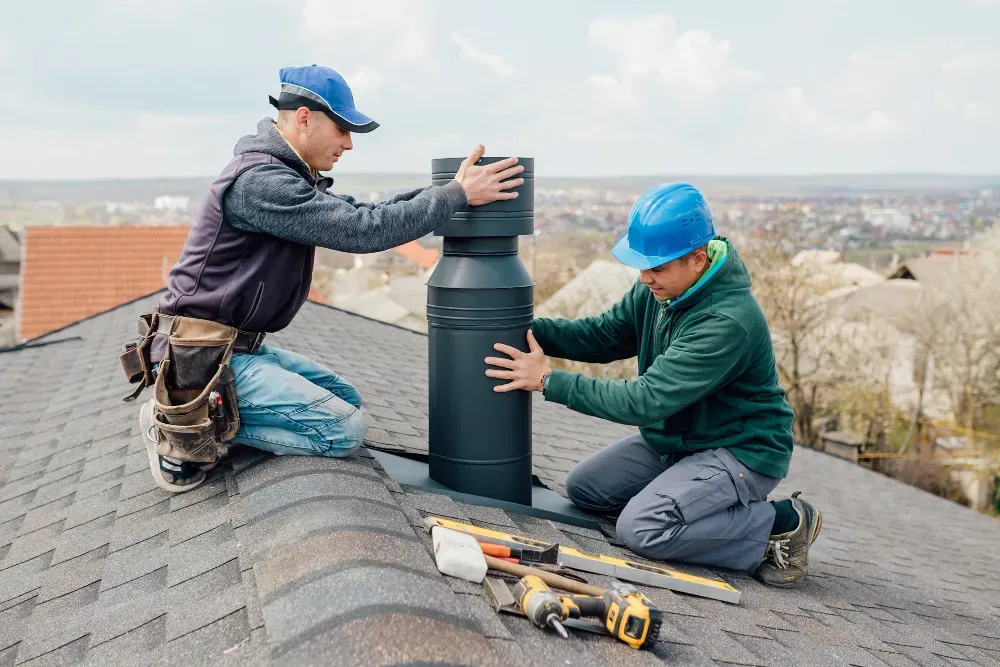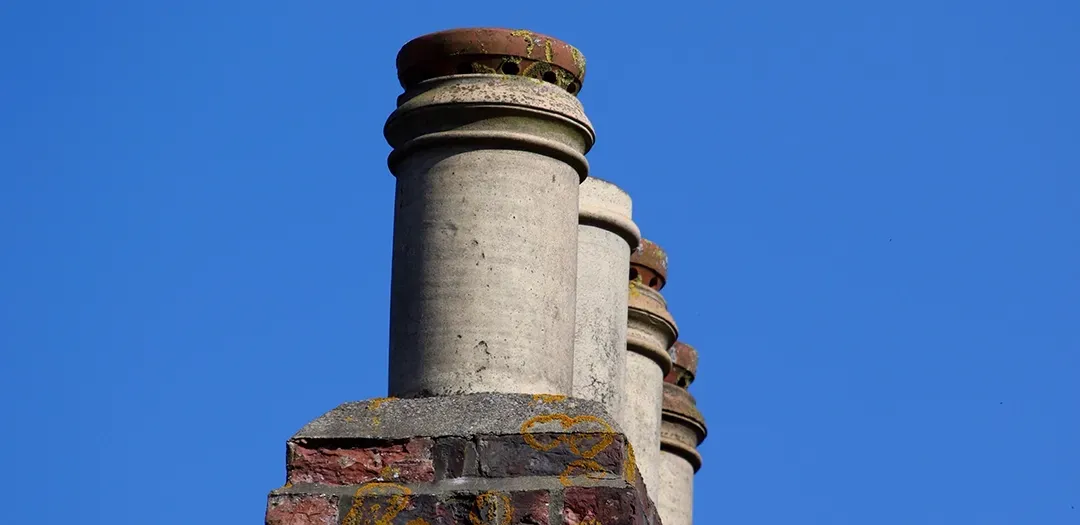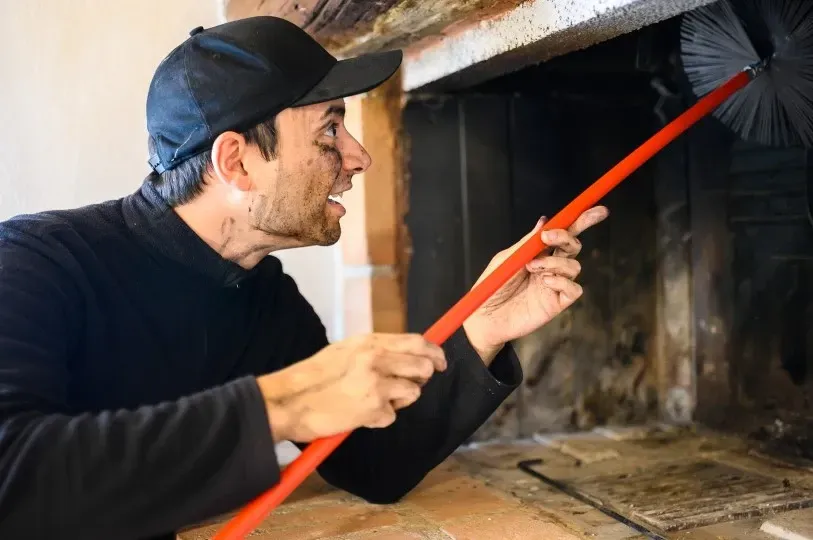Waterproofing Your Chimney: How Crown Repair Helps Prevent Leaks
Is your home feeling damp near the fireplace? Does your chimney show dark stains or white residue? These could be warning signs that water is getting into your chimney. Most homeowners don't think about chimney care until problems arise. But just like your roof, your chimney needs protection from rain, snow, and ice. Let's dive into how proper waterproofing and crown repair can save you from costly damage and keep your chimney working safely for years to come.
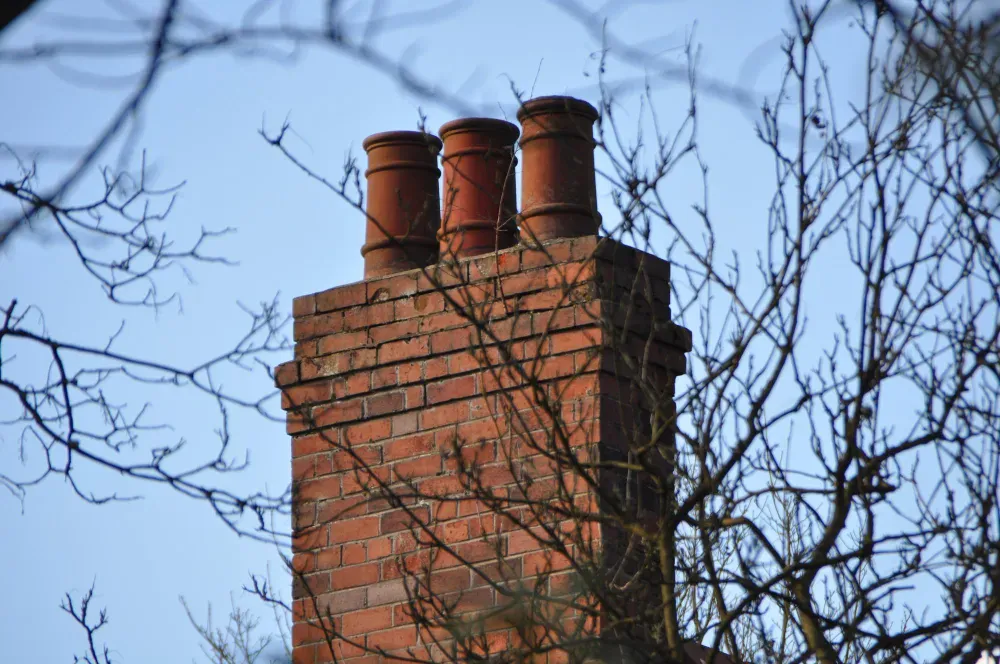
Understanding Chimney Waterproofing Basics
Chimney waterproofing isn't just an extra precaution – it's essential maintenance for any home with a fireplace or wood stove. When water gets into your chimney, it can cause serious problems that affect both your chimney's function and your home's structure.
What Makes a Chimney Vulnerable to Water Damage
Chimneys face tough conditions every day. They stand tall above your roof, taking the full force of rain, snow, and wind. Several factors make them easy targets for water damage:
- Porous brick and mortar that naturally absorb moisture
- Freeze-thaw cycles that expand and contract materials
- Cracks that develop over time from heat and cooling
- Missing or damaged chimney caps
- Worn flashing where the chimney meets the roof
- And most importantly, damaged or poorly designed chimney crowns
A chimney without proper waterproofing is like wearing a hat with holes during a rainstorm – it simply can't do its job. Water that enters your chimney system breaks down the structure from the inside out, often causing damage long before you notice visible signs.
Signs Your Chimney Has Water Damage
Catching water problems early can save thousands in repairs. Watch for these telltale signs:
- Damp spots on walls or ceilings near your chimney
- Musty smells coming from the fireplace
- White staining (efflorescence) on brick surfaces
- Spalling or flaking bricks
- Rust on the damper or firebox
- Water pooling in the firebox
- Crumbling mortar between bricks
If you spot any of these warning signs, it's time to look at your chimney crown – the unsung hero of chimney waterproofing.
The Critical Role of Your Chimney Crown
Among all chimney components, the crown plays perhaps the most vital role in waterproofing. Yet many homeowners don't even know what it is or why it matters.
What Is a Chimney Crown?
The chimney crown is the concrete covering that caps the top of your chimney. Think of it as your chimney's umbrella. It sits on top of the brick structure, sloping slightly away from the flue to direct water onto the roof rather than down into the chimney. A properly designed crown extends beyond the edge of the chimney by at least 2 inches on all sides, creating an effective drip edge.
Unlike the decorative chimney cap (which primarily keeps animals and debris out), the crown's main job is water protection. It's your first line of defense against water damage, making its condition crucial to your entire chimney system.
How Chimney Crowns Prevent Water Intrusion
A well-built crown works in several ways to keep your chimney dry:
- It covers the top of the brick structure, protecting the mortar joints below
- Its sloped design channels water away from the flue opening
- The overhanging edges create a drip line that keeps water from running down the chimney sides
- It seals the space between the flue liner and the chimney walls
- It reduces water absorption into the masonry structure
When working properly, your crown quietly protects your entire chimney system year after year. But when it fails, problems quickly cascade throughout your home.
Materials Used in Quality Chimney Crowns
Not all chimney crowns are created equal. The material makes a huge difference in durability and protection:
- Portland cement concrete mix: The gold standard for crowns, providing durability and crack resistance
- Mortar mix: Often used by inexperienced builders but cracks easily and deteriorates faster
- Cast-in-place concrete: Provides excellent protection when properly reinforced
- Waterproof sealants: Applied over existing crowns for added protection
- Crown coat products: Specialized materials designed specifically for crown repair
The best crowns use concrete with proper reinforcement and waterproof additives. They're also built with expansion joints that allow for natural movement without cracking.
Common Chimney Crown Problems
Even well-built crowns don't last forever. Understanding what goes wrong helps you spot problems before they become expensive repairs.
Cracking and Deterioration Issues
Chimney crowns take a beating from extreme temperatures and weather conditions. Common problems include:
- Hairline cracks that allow water penetration
- Larger structural cracks from settling or poor installation
- Crumbling edges that no longer direct water properly
- Surface deterioration that roughens the crown
- Complete crown failure where large sections are missing
Each crack becomes an entry point for water. During winter, water enters these cracks, freezes and expands, making the cracks even larger. This freeze-thaw cycle repeats, gradually destroying your crown from within.
Poor Installation Concerns
Many crown problems stem from improper installation. Watch for these installation flaws:
- Too thin or structurally weak concrete
- No overhang to create a proper drip edge
- Flat design that doesn't channel water away
- No expansion joints to accommodate movement
- Improper slope that pools water instead of shedding it
Unfortunately, many homes were built with substandard crowns. Some builders simply spread mortar (not concrete) across the top bricks – a practice that virtually guarantees problems within just a few years.
Weather-Related Damage in Different Seasons
Your chimney crown faces unique challenges throughout the year:
- Spring: Heavy rains test the crown's water-shedding ability
- Summer: UV rays and heat cause expansion and drying that can create cracks
- Fall: Temperature fluctuations stress concrete and existing cracks
- Winter: Freeze-thaw cycles force tiny cracks to widen dramatically
In regions with harsh winters, crown damage accelerates quickly. Each freeze-thaw cycle can widen cracks by tiny amounts, eventually leading to significant damage over just one season.
Professional Chimney Crown Repair Process
When crown problems develop, professional repair is often the most cost-effective solution in the long run.
Assessment and Damage Evaluation
A proper repair starts with thorough inspection. Professional chimney technicians will:
- Examine the entire crown surface for visible damage
- Check for hidden cracks that may not be obvious
- Assess the overall structure and design of the crown
- Evaluate whether repair or replacement makes more sense
- Identify other chimney components that may need attention
This evaluation often includes inspection of the flashing, chimney cap, and masonry to ensure all waterproofing systems work together.
Repair vs. Replacement Decisions
Not every damaged crown needs complete replacement. The extent of repair depends on:
- The age and overall condition of the crown
- The severity and number of cracks
- The quality of the original installation
- Whether the crown has proper dimensions and slope
- Budget considerations
For minor cracking, repairs with specialized crown sealants often provide a cost-effective solution. For major damage or poorly designed crowns, complete replacement usually makes more sense.
Modern Waterproofing Techniques
Today's crown repairs use advanced materials that outperform traditional methods:
- Crown coat products that seal and repair in one application
- Polymer-modified concrete for superior crack resistance
- Fiber-reinforced materials that prevent future cracking
- Elastomeric sealants that maintain flexibility through temperature changes
- Water-repellent additives that enhance waterproofing properties
These modern techniques create crowns that last longer and protect better than ever before. Many professionals now add stainless steel reinforcement mesh for added strength in new crown installations.
DIY Chimney Maintenance Tips
While crown repair usually requires professional help, homeowners can perform regular maintenance to prevent problems.
Regular Inspection Checklist
Get in the habit of checking your chimney at least twice yearly:
- Look for visible cracks in the crown (using binoculars from the ground)
- Check for pieces of concrete or mortar in the yard near the chimney
- Watch for water stains on the chimney exterior
- Inspect the attic near the chimney for signs of moisture
- Look inside the fireplace for water stains after heavy rain
- Check that the chimney cap remains intact
- Ensure flashing appears tight and undamaged
Catching problems early can turn a major repair into a minor one. Many homeowners schedule inspections in spring and fall to prepare for seasonal changes.
Simple Preventive Measures
Several easy steps can extend your crown's life:
- Apply waterproof sealant to the crown surface (if safely accessible)
- Keep trees trimmed away from the chimney
- Clean debris from the crown and cap regularly
- Address minor cracks before they expand
- Ensure proper roof drainage away from the chimney
- Schedule professional cleaning and inspection annually
Remember that chimney maintenance is always cheaper than chimney repair. A little attention now prevents big problems later.
Benefits of Waterproof Chimney Protection
Investing in proper chimney waterproofing pays dividends beyond just preventing leaks.
Long-Term Cost Savings
Proper waterproofing saves money in multiple ways:
- Prevents costly structural repairs to your chimney
- Avoids water damage to ceilings, walls, and flooring
- Reduces heat loss through damaged chimney systems
- Extends the life of your fireplace components
- Prevents mold and mildew issues that affect health and home
- Avoids rot in wooden structures near the chimney
Many homeowners are shocked to learn that major chimney repairs often run into thousands of dollars. A properly maintained crown and waterproofing system might cost a few hundred dollars but saves ten times that amount over your home's life.
Protecting Your Home's Structure
Your chimney connects to critical structural elements:
- Roof systems depend on proper water flow around chimneys
- Interior walls can be damaged by chimney leaks
- Foundation issues can develop from water running down chimney interiors
- Attic insulation loses effectiveness when damp
- Electrical systems near the chimney face hazards from water
By keeping your chimney dry, you protect far more than just the fireplace – you're protecting your entire home investment.
Finding Trusted Chimney Repair Services
Not all chimney services offer the same quality. Finding the right professional makes all the difference.
Questions to Ask Potential Contractors
Before hiring a chimney professional, ask:
- Are you certified by the Chimney Safety Institute of America (CSIA)?
- How long have you been repairing chimney crowns?
- What materials do you use for crown repairs?
- Do you provide before and after photos of your work?
- What warranty do you offer on crown repairs?
- Can you provide local references for similar work?
- Will you check other chimney components as part of your service?
- Do you carry liability insurance and workers' compensation?
The answers reveal both expertise and professionalism. Never trust your chimney to unqualified contractors who might create more problems than they solve.
What to Expect from Professional Service
A quality chimney service will:
- Perform a thorough initial inspection
- Provide a detailed written estimate
- Explain exactly what work needs to be done and why
- Use high-quality materials appropriate for your chimney
- Clean up thoroughly after completing the work
- Offer suggestions for ongoing maintenance
- Provide documentation of the work performed
- Include a reasonable warranty on their work
Professional crown repair isn't just about fixing today's problem – it's about preventing tomorrow's emergency.
Conclusion: Investing in Chimney Health
Your chimney crown might be out of sight, but it should never be out of mind. This critical component guards against water damage that can compromise your entire chimney system and even your home's structure.
Regular inspection, timely repairs, and professional maintenance keep your chimney crown in top condition. This small investment prevents the much larger expense of major chimney repairs or rebuilding. Contact Us To Learn More
Don't wait until you see water stains on your ceiling or notice crumbling bricks. By that point, damage has already progressed far beyond the crown itself. Instead, make chimney waterproofing part of your regular home maintenance routine.
Remember that your chimney is a system where each component depends on the others. A properly functioning crown works together with flashing, caps, and water-resistant masonry treatments to keep your chimney – and your home – safe and dry for decades to come.
